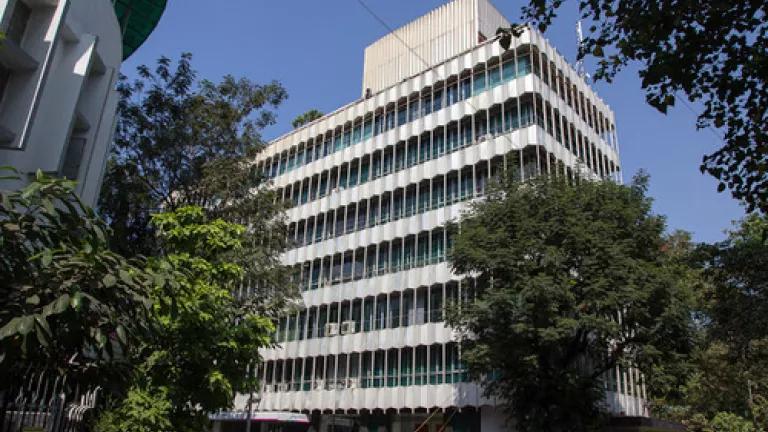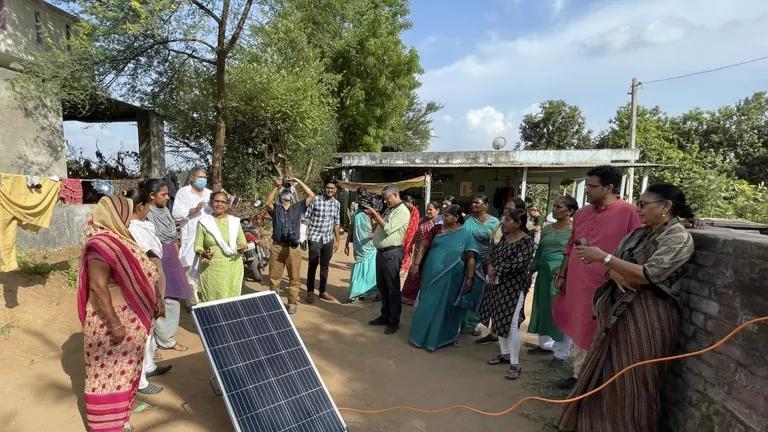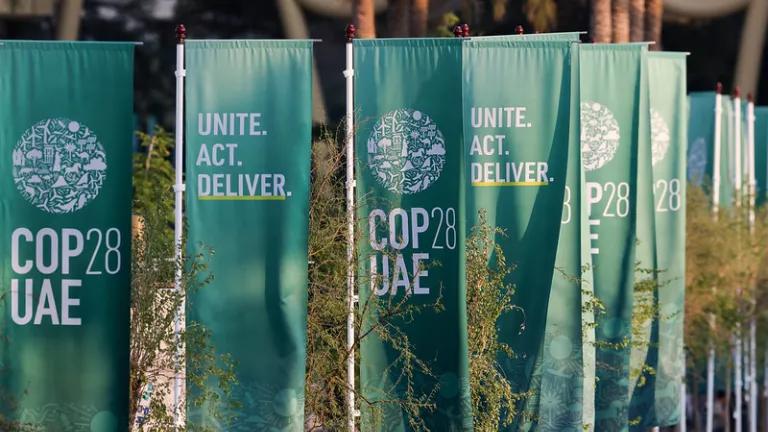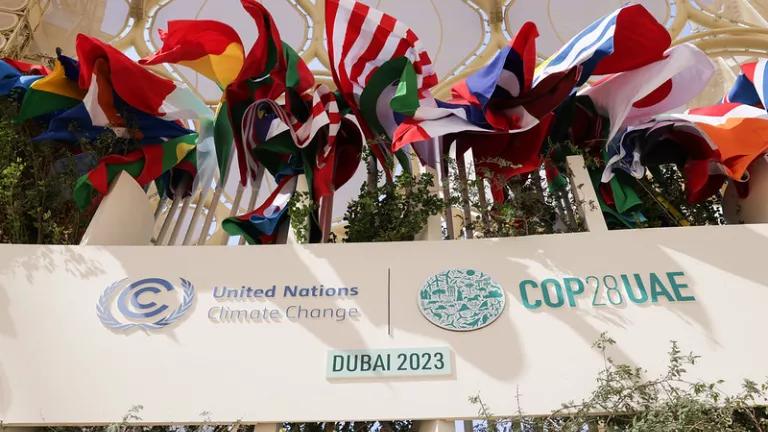
The Godrej Bhavan building in South Mumbai.
Photo: Bhaskar Deol
Rolling blackouts plagued India last summer. More than 700 million people were left without power for hours a day. The outages became routine but troublesome. Imagine if you were in the middle of a business meeting when the power cut out. Or you were preparing a meal for your family or helping a sick parent when the lights went off.
Many large businesses routinely install their own backup diesel generators to get through the outages. But these generators release dangerous pollutants, contributing to the cities’ dirty air and the number of residents suffering from asthma, heart disease, and other medical conditions.
Meanwhile, 400 million people in India are still living without any access to power at all.
Increasingly Indian cities and businesses are turning to one of the fastest, cheapest, and cleanest ways to address blackouts and power demand: energy efficiency.
Energy efficient lighting, windows, and air conditioning get more productivity out of less energy and save money at the same time. This also reduces the surging energy demand that leads to frequent blackouts.
NRDC’s India Initiative works with Indian partners to spread the benefits of efficiency across the nation. Our team just released a case study showing how Godrej & Boyce—one of India’s largest industrial corporations—transformed its South Mumbai headquarters into an energy-efficient flagship.
The company invested in efficiency because it made good business sense. The Godrej Bhavan building had shouldered high electricity bills for decades. But by installing efficient cooling and lighting systems, energy management and metering, water-flow metering, and a green roof, the building has started to slash its energy bills.
Only two years after the upgrade, Godrej Bhavan’s electricity use has already dropped by more than 12 percent, representing a 28.6 percent savings in electricity costs. Its savings on electricity bill alone will allow Godrej & Boyce to pay back the cost of its energy retrofits (Rupees 5,384,000) in as little as 4.7 years.
The Godrej Bhavan case study—written by NRDC and the Administrative Staff College of India (ASCI)—shows that energy efficiency upgrades are profitable for businesses in India’s rapidly transforming cities.
It offers a clear blueprint for companies that want to make their existing office buildings more efficient. And once they see the energy and money savings, they will be inspired to incorporate efficiency into new buildings as well. Two-thirds of the buildings that will exist in India in 2030 haven’t been built yet. We can make them as energy efficient as possible from the start.
The benefits would be enormous. Installing energy efficient solutions in buildings, industrial plants, and consumer appliances could save India $42 billion each year by 2020, according to McKinsey & Company. With 70 percent of Indians living on less than $2 a day, these savings could make a significant difference for residents and businesses stressed by energy costs.
This is an exciting time to be in India. The country’s growth is skyrocketing, and many companies, cities, and government ministries are trying to make that growth more sustainable. NRDC released our Godrej Bhavan case study during the fourth Clean Energy Ministerial. This is the only gathering of energy ministers from the world’s leading economies that is specifically focused on accelerating the shift to clean energy.
India was a great setting for the Clean Energy Ministerial, because it has made a strong commitment to wind and solar power and energy efficiency in its 12th Five Year Plan. The Indian government recently announced plans to double the amount of clean energy generated by 2017. The country’s bold National Solar Mission has already driven solar prices down to near grid parity—the point where solar can compete with energy from traditional sources like coal and natural gas. And the state of Andhra Pradesh plans to introduce a local Energy Conservation Building Code to reduce energy usage in buildings throughout this high-tech hub.
I was honored to participate in the ministerial and to witness and support India’s leadership in renewable power and energy efficiency. Decreasing reliance on fossil fuels, reducing blackouts, cleaning up the air, and saving money on electricity bills definitely sounds smart from the start.



